Tue 22 Apr 2014
Madness
Posted by Ginger under FME (Free Machine Embroidery, Hand Embroidery, Uncategorized
Comments Off on Madness
I took a week off for Spring Break, but I have, by no means, been fallow! Â I have been thinking and writing more about madness and genius, most specifically related to Vincent Van Gogh, Virginia Woolf, and Sylvia Plath. Â I read Van Gogh: The Life by Steven Naifeh and Gregory White Smith last year, and I continue to be drawn back to it. Â The text is thorough and beautifully written, and Van Gogh himself is a lovely study because he, too, loves words. Â This text also encourages my questions about genius and madness and their odd, often sad, symbiotic nature. Â Naifeh and Smith argue that Van Gogh suffers from a form of epilepsy, but they also highlight his generally odd nature. Â From a very early age he retreats from society mostly because people pick up on his lack of social grace. Â He would love nothing more than to be accepted by others, but too often he finds himself ridiculed instead. Â So his loneliness and isolation shape him as a person, while his illness grows to the point where he is hospitalized. Â Throughout his life he encounters terrible spells in which he eats paint and behaves like a lunatic. Â Famously he even cuts off part of his ear, but the treatment of that incident in the biography is more a spell of melancholy and desperation rather than all out madness. Â Pondering all of this information and what I know about Virginia Woolf–a brilliant mind that heard voices,which are finally silenced by suicidal drowning–I wonder about the relationship between the artistic, superior mind and the supposed madness. (I always recall Emily Dickenson’s admonishment that “Much madness is divinest sense to a discerning eye.”) Â I do not think either Woolf or Van Gogh would be the artist they are without the consternation of their brains and hearts, however sad that may seem. Â I read more about Woolf and, of course, found the woman question…did she suffer because she wanted children? Â Is she ahead of her time and ultimately constrained by society? Â I need to read more, and I have several biographies along with her own diaries and essays in mind to read. Â Sylvia Plath, too, is fascinating, though I know the least about her. Â I plan to read The Bell Jar and more of her poetry…I’m sure a biography will creep in too…but I am well on my way in thinking about the cohesion of genius and madness.
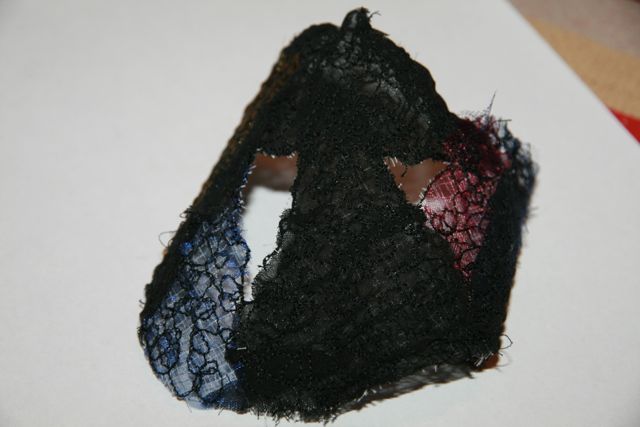
Free machine embroidery sample…I am going to have to make more. I will embroider this one and share that with you. Won’t they look lovely drawing together parts of the madness piece? Too, I think FME will help with the texture I am seeking in the panel!
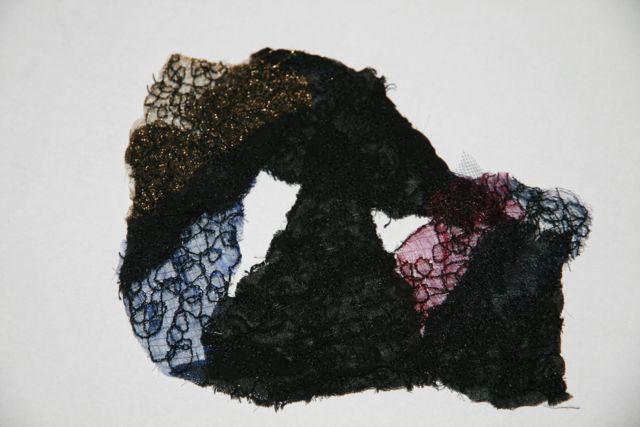
Another view of the sample piece of free machine embroidery for my madness piece. I am enamored with it!
I have finished piecing the madness panel, so I am ready to titivate it, and I realized today that I have a desire to make it pretty in addition to evoking confusion, melancholy, and crisis. Â I believe the art that I love of Woolf and Van Gogh is a result of that perfidious relationship between genius and madness. Â The art makes me appreciate the madness, which I think they both despised.
By the way, I have not allowed comments so far because I’m not sure I can keep up with them, but if you are reading and looking, and you want to comment on anything here, then please feel free to email me! Â Just click on the contact button at the top right of the page!
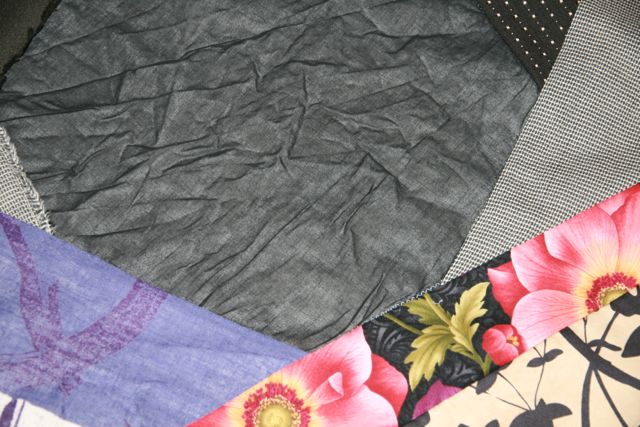
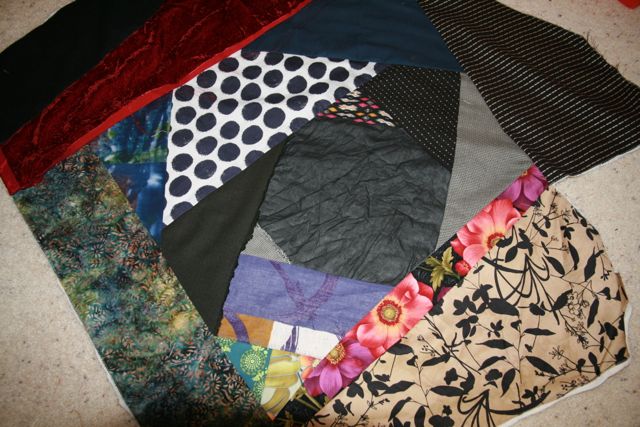
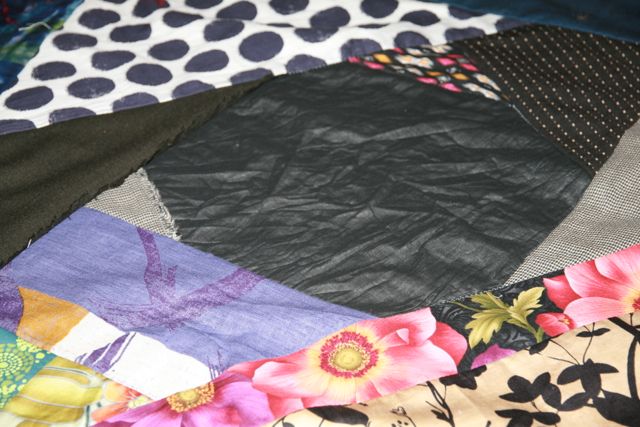
No Responses to “ Madness ”
Sorry, comments for this entry are closed at this time.